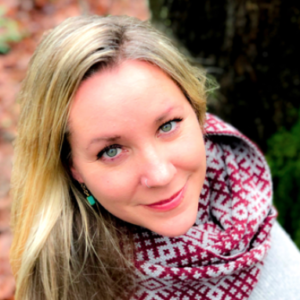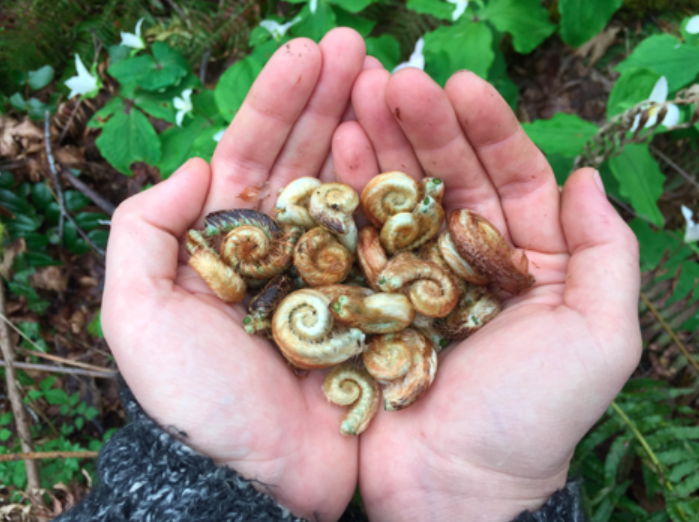 Our alumni are those who embody and extend text, soul, and culture far beyond the walls of 2501 Elliott Avenue. Our hope is that The Seattle School will be led by our alumni and their stories—how they labor to live out their calling among the people and communities they serve. Mary DeJong (MA in Theology & Culture, ‘17) is an urban naturalist and ecotheologian who writes and speaks on sacred ecology, theology of place, Celtic Christianity, and pilgrimage. Mary currently lives in Seattle and through her organization, Waymarkers, she leads regional and international pilgrimages to help travelers connect faith with the natural world.
Our alumni are those who embody and extend text, soul, and culture far beyond the walls of 2501 Elliott Avenue. Our hope is that The Seattle School will be led by our alumni and their stories—how they labor to live out their calling among the people and communities they serve. Mary DeJong (MA in Theology & Culture, ‘17) is an urban naturalist and ecotheologian who writes and speaks on sacred ecology, theology of place, Celtic Christianity, and pilgrimage. Mary currently lives in Seattle and through her organization, Waymarkers, she leads regional and international pilgrimages to help travelers connect faith with the natural world.
In what ways has your story impacted, shaped, or inspired your vocation?
I have been on a long journey led by the deep desire to integrate two primary stories that formed the foundational elements of my life. I grew up in a home with an evangelical, charismatic Christian mother and an atheist, amateur astronomer, mountaineering father. Together they found their mutual love in the mountains, but parsed out the practice of this love through separation, having us switch off our connection to the Holy through attending pentecostal churches every other week with my Mom, and going hiking in the Northern Cascades with my Dad on the off weeks. I got completely different understandings of my self and the natural world from these divergent contexts. One told me of my inherently sinful and degraded nature, while the other affirmed the dignity of diversity and the more-than-human world. One story honed in on depravity and a transcendent God, while the other whispered to me of goodness and a sacred, wild world. This dichotomy was a shame-filled struggle for me, and it wasn’t until I was introduced to the Celtic Christian spirituality stream over 20 years ago that I felt like I found a path that would honor both the wisdom of my faith tradition and an inherent understanding of our place of belonging within a very good and inspirited creation.
The great cultural historian and ecotheologian Thomas Berry once said, “It’s all a question of story.” What are the stories we tell, and how do they contribute (or not) to a flourishing future for all on our planet? I had been told two stories growing up, and my work has been, both personally and vocationally, about reconciling the two, and seeking after the deep wisdom that often lives in wild edges of the dominant storyline. As an urban naturalist I have worked for over a decade on restoring an urban forest, bringing it back into a state of flourishing, ecological wholeness. In conservation circles, this is called “rewilding.” My work as the proprietor of Waymarkers, a small business that offers local retreats and pilgrimage journeys, is to apply this idea of rewilding to our soulscapes, our inner landscapes that have suffered from traditional stories of separation. I see rewilding as a process of remembering: remembering that we carry wildness within; remembering that we are related to other plants and animals who inhabit Earth with us; remembering that we are on a common journey upon our common home with the whole of creation. When we rewild our stories, our souls are brought back into wholeness and communion with the natural world.
“When we rewild our stories, our souls are brought back into wholeness and communion with the natural world.”
How has your work been informed by your education at The Seattle School?
The Seattle School provided the rigor and relationships to hone my intuitive sense of an existing sacred ecology. While I had years of experience and practice in the categories of urban forestry, place-making, and pilgrimage-taking, I lacked theological grounding and trained theory. I needed to come to a place that would hold my emerging hermeneutic, hold iron to my intuitions, and inspire regenerative ways of leaning into the mystery we call God. The faculty and staff were extremely supportive in allowing me to self-create my focus within the field of ecotheology. In many ways this opportunity to create my core learnings at The Seattle School reinforced and elevated my experience as I was able to draw from other programs from across the nation and bring them into my readings, learnings, and self-designed coursework. Through this creative framework, I was supported to go deep into transformative theories that ultimately inspired my integrative project, which offered a new model of understanding our roles of being image bearers of God. This new understanding of the imago Dei is now foundational to my work, writing, and speaking through Waymarkers, and is a project that I am continuing to work on with the hopes of publishing it as a book.

What vocational rhythms or practices have you implemented?
The primary practice that I’m working with right now comes through this idea of rewilding the image of God, which hinges on the understanding that the personhood of humanity, the Sacred, and the natural world are all in a holistic, inter-animating relationship. This foundational Trinitarian lens affirms the personhood of Living Earth and the more-than-human world. To practice this theory, I have developed the Rewilding Wheel.
The Rewilding Wheel is a sacred circuit that seeks to locate the wisdom of universal nature symbols with one’s particular homescape and spiritual formation. By locating the psychospiritual patterns found within the natural world to a particular place, the ancient wisdom inherent in the cardinal directions and elements takes on a practical shape and invites a focused seasonal practice. In this way, the Rewilding Wheel is unique as it invites a sacred process of remembering and recovering relationships within various ecosystems throughout your bioregion.
A bioregion is an ecologically and geographically defined area rather than one dictated by human-made divisions. Moreover, the poet and environmental activist Gary Snyder would say that a bioregion is the “spirit of a place.” This is how God shows up within the particularities of a place and offers inspiration and understanding toward living whole-ly and holy. A soulful bioregional attunement moves us from an ego-centric posture on the planet to an eco-centric one where one’s whole identity is rooted and interconnected with all of creation.
One is invited into the practices of the Rewilding Wheel through my quarterly Rewilding Retreats which are offered at the numinous grounds of the Whidbey Institute. You are all personally invited to come and rewild yourself, your worship, and your wonder at an upcoming retreat!
What inspires you or gives you hope?
Truly, and now more than ever, I gain my hope from the amazing and regenerative systems of the natural world, which are simply and sophistically repeating the cosmic patterns of the Paschal Mystery and the Christ. Within our Sacred Story is a profound Reality that can be experienced when one finds their place of belonging here, on our sacred and animated planet.
In The Spell of the Sensuous, David Abram tells us that “we are situated in the land in much the same way that characters are situated in a story…along with the other animals, plants, stones, trees, and the clouds, we ourselves are characters within a huge story that is visibly unfolding all around us, participants within the vast imagination, or Dreaming, of the world.” Within the wild world exists something of God that we are missing entirely if we focus simply on our human lives. German theologian and mystic, Meister Eckhart (1260-1327) said something of the same: “If humankind could have known God without the world, God would never have created the world.” Creation is not a mere scenic backdrop so humans can take over the stage. Creation is in fact a full participant in human transformation, since the outer world is absolutely needed to mirror the true inner world. There are not just two sacraments, or even seven; the whole world is a sacrament! I am inspired by prophetic healers, voices calling us to our collective, numinous relationship with nature. The land models mutuality and sustainability, but to come to know these values, one must be in renewed communication with other species—an occurrence inherent to being in the natural world.
About Waymarkers
The name Waymarkers comes from the themes of the exilic journey in the Old Testament book of Jeremiah, a journey that guides Israel back to her city, to her homeland. In Jeremiah 31:21 there is a command to set up way marks, collected items from the natural world believed to likely be heaps of stones, or pole-like trees, put upon the path to guide the traveler through wild and spacious landscapes. Here there is a sense that the natural world is coming alongside the traveller to provide guidance, wisdom, and a sense of direction toward a place of belonging.
There is still a deep longing in our Western culture to wander toward wild places and to have this wayfaring lead to deep meaning, renewed ways of seeing, and back to our own sense of grounded belonging to this Earth and the communities in which we live. Where are the markers within creation that mark your path? Can you discern that features within the natural world that are set up to guide your way? Waymarkers exists to provide accompaniment along your personal path of spiritual formation so to receive guidance from your particular places, cultivating a sacred perception of the soul and wild nature.
